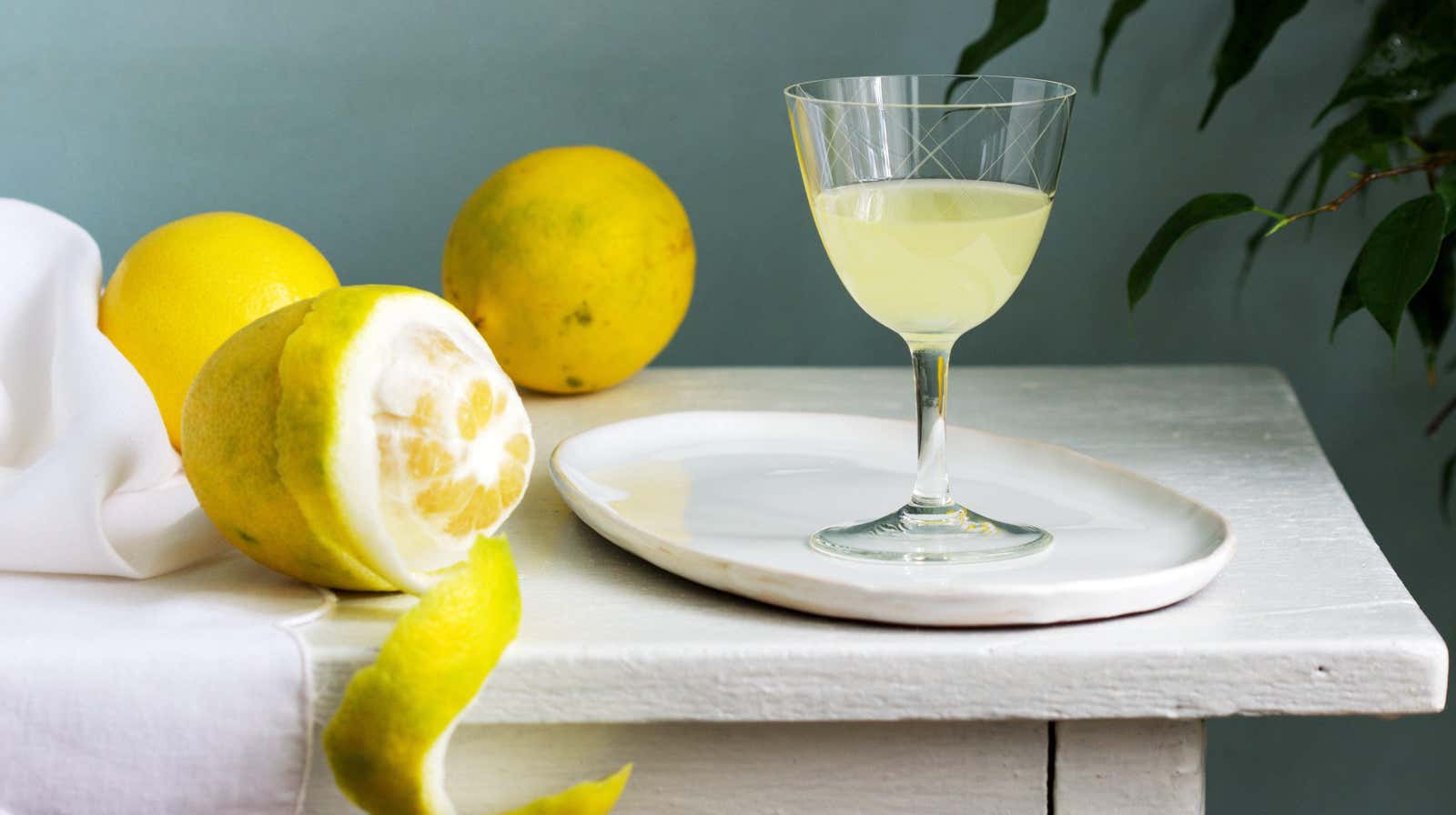Two of the Best Ways to Make Limoncello at Home

When life gives you lemons, you make lemonade, but only the flesh of the fruit. The lemonade does nothing to soften the barrage of lemon zest, but the solution again is a drink: Limoncello.
Limoncello – or limoncino if you’re from northern Italy – is an Italian lemon liqueur made primarily in southern Italy. I tried my first limoncello on the Amalfi Coast at the tender age of 19 and remember feeling very sophisticated and trendy. It is a bright, heady, sweet and aromatic drink best enjoyed chilled at the end of a meal. It is also good in sparkling water or in a tall glass of regular lemonade. Just be careful: the candy flavor makes it very easy to forget that limoncello is actually alcoholic.
Determine your ideal limoncello strength
Limoncello can be prepared in two ways: fast and slow. The quick method requires a sous-vide submersible circulation pump, but otherwise the procedures are very similar: place the lemon peel in a container of at least 40% neutral alcohol and let it steep for at least five days. . Dilute and sweeten with simple syrup. Ready.
The alcohol you start with and the amount of simple syrup you add will determine your ABV. In this recipe from Food52, you add 1 cup of syrup to 750 milliliters of infused vodka. Using our handy dilution equation , we see that this gives us a final ABV of about 30%, which is where most of the limoncelli hangs. If you haven’t used the dilution equation since high school, don’t worry, it’s very simple.
Dilution equation: c₁V₁=c₂V₂ where:
- c 1 = initial concentration or molarity
- V 1 = initial volume
- c 2 = final concentration or molarity
- V 2 = final volume
To find the final ABV, rearrange the equation to find V₂:
c₁V₁/V₂= c 2,
(40%)(750ml)/987ml=30%
If you want it stronger, use a tasteless grain alcohol with a higher alcohol content, such as Everclear. If you want it weaker, add more syrup or water. However, 30% ABV is a pretty good starting point.
How to make limoncello (slowly)
As mentioned earlier, limoncello is made from bright yellow lemon peel. For a 750 ml bottle of alcohol, you will need 9-12 lemon peels, depending on their size. (Wash in hot water to remove the wax.) You can either peel them all at once and use the juice for something else, or peel individual lemons as you use them (just be sure to peel them before slicing, slicing or juicing so that you don’t have to struggle with flexible, worn-out peels). Store the peel in the freezer until you have enough. (Use a Y-shaped knife to get very thin strips of peel without the core.)
Place the peel in a large glass jar, pour vodka on top and stir a little. Leave it in a dark, cool place for five days to a month. You’ll know you’re done when you open the jar and you’re instantly transported to a lemon garden.
Add 1 cup sugar to 1 cup water in a saucepan and heat, stirring occasionally, until all the sugar is dissolved (do not bring to a full boil). Let the syrup cool completely.
While the syrup is cooling, strain the infused spirit into a bottle or two using a fine sieve. (Keep in mind that the original liquor bottle won’t have enough room for the liquor and syrup.) Click on the peel to get all those delicious oils. Add the chilled syrup to your strained drink, shake and chill completely before serving in cute little glasses.
How to make limoncello (quickly)
The procedure for making quick limoncello is very similar to the procedure for making slow limoncello, you just need to connect the immersion circulator. Instead of adding alcohol and peel to a jar, you add them to a freezer bag and then place the bag in a sous-vide bath at 135℉ for two hours. Then prepare the syrup and add it to the infusion as described above.
Variation on a theme
As with oleo saccharum , you can use the peel of any citrus fruit you desire. You can also add herbs and whole spices like peppercorns (which is what Food52 uses in their recipe), lavender, bay leaf, or anything else you think would be appropriate along with sweet lemon. (I’m a bit of a purist, but I have to admit that juniper, grapefruit, and cello sound pretty cool, though a bit like gin.